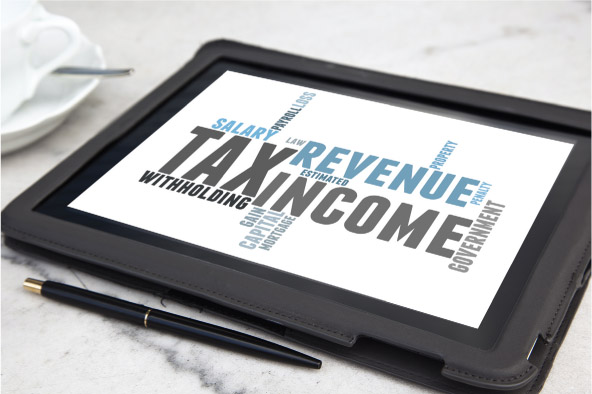21.3 Employers and employer groups
An employer is generally regarded as any person or business that engages one or more people and in return pays them a wage or salary. As an employer there are a range of responsibilities that are attached to employing and managing your staff, such as:
- ensuring your employees are receiving their correct pay based on the Australian minimum wage and National Employment Standards
- providing a safe and equal opportunity workplace
- paying employees their entitlements (holiday pay, sick leave, maternity and parental leave, and long service leave)
- paying all required taxes (income tax (PAYG), payroll tax, company tax and Goods and Services Tax (GST))
- making superannuation contributions on behalf of your employees
- ensuring accurate records are being kept on staff. Employees can be engaged in a variety of ways:
- a permanent full-time basis where the employee enters into a continuing contract of employment. The number of hours worked per week (for example, 38 hours) will depend on the conditions of either the award or collective agreement applicable to that business. The employee will be entitled to receive a salary or wages, leave entitlements and superannuation as well as accruing long service leave.
- a permanent part-time basis where the employee enters into a continuing contract; however, while entitled to all of the above employment conditions, they work fewer hours than a full-time employee. All calculations for pay and entitlements are made on a pro rata basis.
- a casual basis where an employee is often appointed by oral contract (not written) for short-term, irregular or seasonal work. They are usually engaged or paid on a daily or hourly basis and do not have access to many of the employment benefits available to permanent employees. Their wages usually include compensatory loads of between 15% and 20%. Legislation now protects casual employees terminated after having been employed for more than 12 months.
-

Source 21.8 Employees may be hired on a full-time, casual or part-time basis. -

Source 21.9 Negotiating a collective agreement
All workers in Australia, whether they are in permanent or casual employment arrangements, have the same right to work free from discrimination. It is unlawful for an employee to be treated poorly at work or to be fired on the grounds of discrimination.
Businesses (employers) may choose from one of the following arrangements relating to the pay and working conditions under which they employ their staff:
- an award, which is a legally binding document which relates to a given industry or occupation. The Fair Work Commission sets the minimum wages and conditions that must be paid to workers and incorporates the National Employment Standards.
- a collective agreement, which is a written agreement made between an employer and the employees setting out the terms and conditions of employment relevant to a particular workplace. These agreements also incorporate the NES. Once in operation, it replaces any award that would otherwise apply. The agreement prior to its approval is subject to checking against the Better Off Overall Test (BOOT) created by the Fair Work Act 2009. The purpose of this test is to ensure workers entering into this agreement will be better off overall.
The ABS reported that in May 2012 the most routine methods of setting pay for all employees were collective agreements (42%) and individual arrangements (38.7%). An award was the least popular method of setting pay (16.1%). The remaining 3.2% of employees were owner–managers of incorporated enterprises.
In 1992 the Australian government made it compulsory for employers to pay superannuation for their eligible employees. This is referred to as the ‘Super Guarantee’ (SG). To be deemed eligible an employee has to have earned $450 or more (pre-tax) in a calendar month working for an employer. Should the employee be under 18 years of age, they must also have worked more than 30 hours per week to be regarded as eligible. The employer must select a compliant super fund for the employee; however, if the employee is already a member of an authorised fund, the employer can pay the super guarantee into that fund on their behalf. All SG payments must be sent through to the fund on a quarterly basis. The federal government determines the rate of the SG. In 2014, the rate is 9.25% and it will incrementally increase to 12% by July 2025.
Source 21.9a A short ATO tutorial on superannuation. (02:29)
RESEARCH 21.1
A paid parental leave scheme was introduced by the federal government on 1 January 2011. Under the existing NES, employees who had worked for 52 weeks for an employer before applying for leave were entitled to receive up to 12 months’ unpaid maternity leave. It should be noted that many employers had already negotiated a paid component of their parental leave scheme. The introduction of this scheme was not to be seen by employers as a way of stopping their current arrangements, but instead complementing them and providing additional financial assistance to employees taking time out of the paid workforce to care for a child.

Paid parental leave is aimed at providing financial support to all eligible working parents of newborn or recently adopted children. The government funds employers to provide up to 18 weeks’ Parental Leave Pay or two weeks’ Dad and Partner Pay when eligible employees take time off work to care for a new child. The rate of pay is based on the National Minimum Wage and it is the responsibility of both the employee and the employer to register with Centrelink. The employer needs to advise Centrelink of their employee’s normal pay-cycle so that payments can be paid in accordance with it. Pay as You Go (PAYG) tax needs to be withheld from the employee’s pay and then forwarded to the Australia Tax Office (ATO).
DEVELOPING YOUR UNDERSTANDING 21.2
- Explain why working parents receive financial support when they give birth to or adopt a child.
- Do you think up to 18 weeks’ Parental Leave Pay or 2 weeks’ Dad and Partner Pay is a generous amount? Justify your answer.
- Determine whether there have been any changes to the paid parental leave scheme. If so, describe the changes.
It is the responsibility of employers to pay a range of taxation to the federal government. The money collected from taxation acts as a vital revenue stream for the government. Employers are responsible for paying (some) and collecting the following taxes:
- Personal income tax is based on the personal earnings of tax payers. Income tax is withheld from the wages and salaries of employees and is calculated on a progressive rate, with a current tax-free threshold of $18 200. It is the responsibility of employers to deduct (withhold) this amount from the gross income of their employees and then forward the amount to the ATO. You can see how the tax rate varies for different income levels by using the Australian Securities an dInvestments Commision income tax calculator at https://www.cambridge.edu.au/redirect/?id=222.
- Company tax is calculated at the flat rate of 30%. This federal income tax is levied on the taxable income of the employer’s business. It is calculated on assessable income excluding GST (paid or collected) less any allowable deductions for certain expenses incurred in relation to running the business. It is the responsibility of a business to lodge a tax return every year, regardless of whether it has a tax liability or not.
- Goods and Services Tax (GST) is a broad-based tax of 10% on most goods, services and other items sold or consumed in Australia. Any employer who operates a for-profit business that has a GST turnover of $75 000 or more, or a not-for-profit business with a GST turnover of $150 000 or more, needs to register for GST. The business must then include GST in the price of the products it sells and also claim credits for GST in the price of products it buys for the business. A tax invoice must be provided to the business’ customers. Upon payment of the account, it is recommended that the business place the GST into a separate bank account, and report and pay GST amounts to the ATO when lodging its quarterly business activity statements (BAS).
- Payroll tax is levied by state governments in Australia and is based on the wages bill of the employer. The rate differs between states, with Tasmania imposing the highest rate of 6.10% and Queensland charging the lowest rate of 4.75%.
DEVELOPING YOUR UNDERSTANDING 21.3
Interactive 21.1

Employer associations are groups of employers who unite to promote their common interest in employee relations as well as to share information and offer mutual support. There are three types of employer associations:
- industry associations formed to represent employers from the same Master Builders’ Association
- professional associations made up of members of professions such as lawyers (the Law Institute), doctors (the Australian Medical Association) and engineers (Engineers Australia)
- peak bodies comprised of large numbers of employers from varied industry types (the Australian Industry Group). Australia’s largest and most representative business association is the Australian Chambers of Commerce and Industry (ACCI), which speaks on behalf of the nation’s peak council of business organisations and regards itself as the authentic voice of Australian enterprise and industry.

The impact these associations have on the work environment is varied. They can act as the spokesperson for members of their organisation, advise their members of their rights and obligations, and represent employers in employee relations matters.